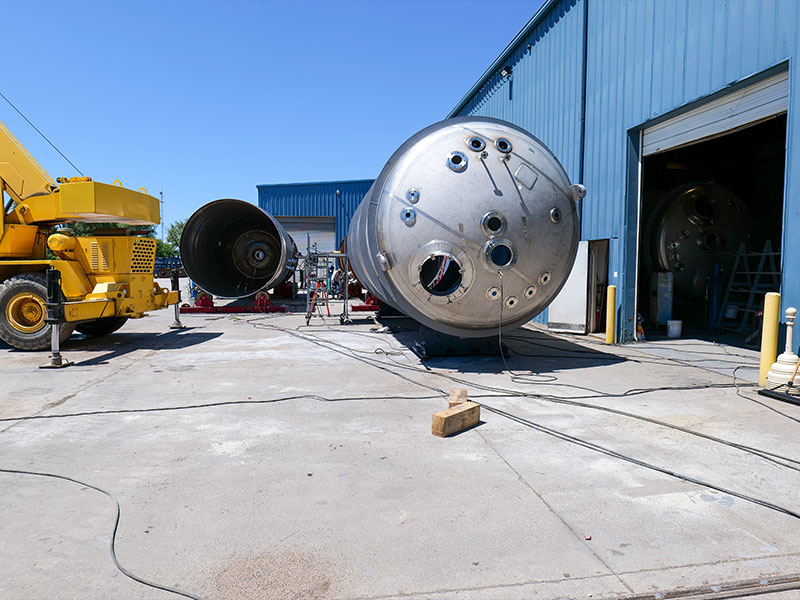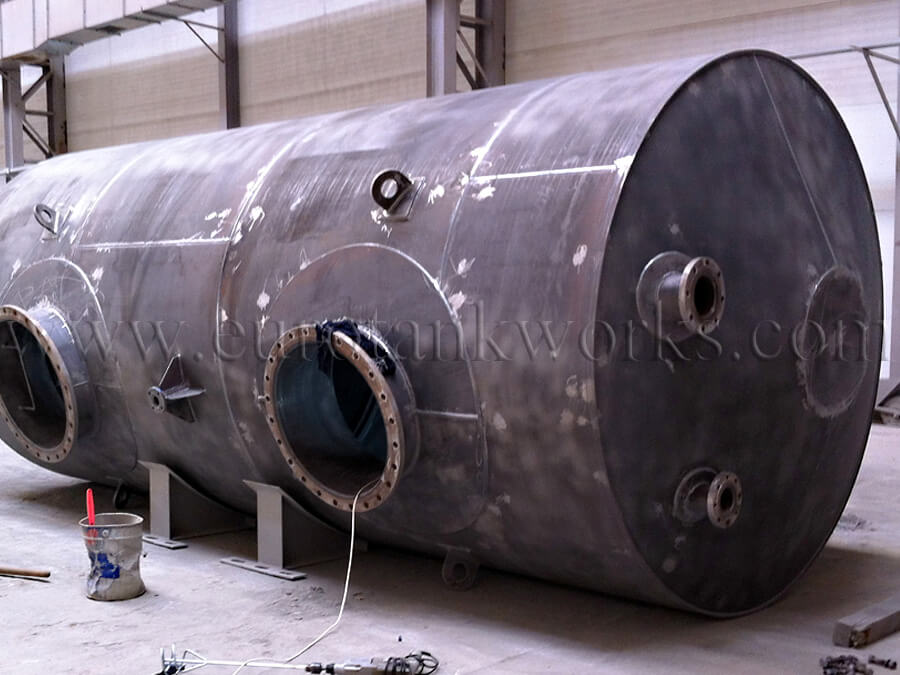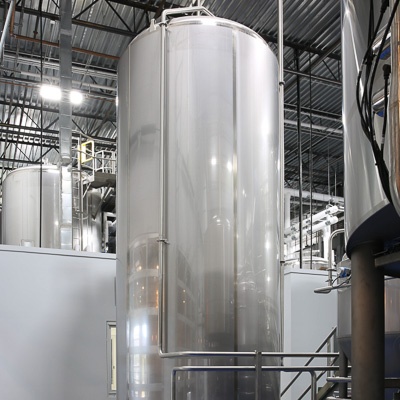The Future of Storage Tank Manufacturing: Patterns and Technologies to View
The storage tank manufacturing sector is on the cusp of an essential development, driven by emerging trends in clever products, automation, and sustainability. As industries increasingly focus on environmental duty, technologies such as green composites and IoT-driven monitoring systems are improving operational standards. Furthermore, the growing need for personalization and modular layouts recommends a shift towards more adaptable production methods. Recognizing these fads not only highlights the obstacles ahead yet likewise discloses chances that could redefine the landscape of storage tank manufacturing in the coming years. What implications might these improvements hold for industry stakeholders?
Improvements in Smart Materials
In the last few years, the storage tank manufacturing field has observed a significant uptick in the fostering of smart materials, changing design and capability. Smart products, which can respond dynamically to environmental adjustments, have allowed manufacturers to develop tanks that are not only a lot more long lasting however additionally a lot more efficient in their operational capabilities.
One notable development is the integration of shape memory alloys and polymers that can adapt to differing stress and temperature levels. This adaptability enhances the architectural stability of tanks, reducing the risk of leakages and failures (Texas Oil & Gas Storage Tank Fabrication Authority). Furthermore, these materials frequently display self-healing homes, which even more lengthens the life expectancy of storage space tanks, reducing upkeep costs and boosting safety
Furthermore, the incorporation of sensors within wise materials permits for real-time surveillance of tank conditions, providing crucial information that helps in anticipating upkeep and threat monitoring. This data-driven approach not only improves functional performance however also straightens with environmental sustainability objectives by enhancing source use and stopping spills.
Rise of Automation Technologies
The increase of automation modern technologies is changing storage tank manufacturing by integrating robotics right into manufacturing procedures, improving effectiveness and accuracy. Furthermore, the release of smart sensors allows real-time surveillance, ensuring high quality control and security criteria are fulfilled. AI-driven procedure optimization further enhances procedures, lowering prices and boosting overall productivity in the industry.
Robotics Integration in Manufacturing
Robotics integration is reinventing the production landscape, particularly in the storage tank industry. As manufacturers venture for enhanced efficiency and accuracy, robotics innovations are ending up being essential tools for improving production procedures. Automated systems are qualified of executing recurring jobs with greater speed and accuracy than human labor, reducing the likelihood of errors and boosting total product top quality.
One of the vital advantages of robotic assimilation is the capability to optimize process. Automated robot arms can handle heavy products, weld components, and carry out inspections, which reduces physical stress on workers and reduces downtime. This change not only improves security however also permits human staff members to concentrate on even more complex and value-added jobs.
In addition, robotics can facilitate versatile manufacturing, allowing companies to adapt quickly to transforming market demands - Storage Tank Manufacturing. Advanced programming enables robotics to quickly switch over in between various tasks and products, which is especially beneficial in a sector where customization is progressively desired
As robotics modern technology continues to progress, manufacturers can expect improved abilities, consisting of improved maker finding out formulas and enhanced truth applications, better driving performance in storage tank production and setting brand-new criteria for the market.
Smart Sensors Release

Moreover, the information gathered from these sensing units can be leveraged to optimize the supply chain, guaranteeing that materials are readily available when needed while reducing waste. This level of understanding permits manufacturers to react quickly to transforming problems and customer demands, boosting general efficiency.
In addition, smart sensors contribute to boosted regulatory compliance by constantly keeping an eye on ecological elements and making sure adherence to safety and security standards. As the industry progresses towards even more lasting methods, the capacity to monitor discharges and resource consumption in real-time is vital.
AI-Driven Process Optimization
Manufacturers in the storage tank sector are significantly taking advantage of the power of AI-driven procedure optimization to boost functional performance and decision-making abilities. By incorporating sophisticated algorithms and device discovering methods, business can assess large amounts of data created throughout the manufacturing process. This data-driven approach enables real-time surveillance of manufacturing metrics, bring about even more informed choices and prompt interventions.
AI technologies promote anticipating upkeep, allowing manufacturers to expect tools failings before they take place, thus minimizing downtime and maintenance prices. Furthermore, these systems can enhance resource appropriation by assessing production patterns and adjusting operations, making sure that products and labor are made use of effectively.
Furthermore, AI-driven optimization boosts high quality control by identifying possible problems during the manufacturing procedure. Automated examinations powered by AI can promptly identify variances, ensuring that only products satisfying stringent quality standards advance through the assembly line.
As the storage tank sector continues to welcome automation, AI-driven procedure optimization sticks out as a transformative force, driving advancement and competition. By leveraging these innovations, manufacturers can not only enhance procedures yet likewise adjust swiftly to market needs, placing themselves for sustainable growth in a significantly intricate manufacturing landscape.
Emphasis on Sustainability Practices
As the storage tank manufacturing sector develops, a significant focus is put on sustainability techniques. This includes the adoption of eco-friendly materials, the application of energy-efficient production procedures, and the integration of circular economic situation principles. By focusing on these campaigns, manufacturers not only decrease their ecological impact however additionally boost the longevity and effectiveness of their items.
Green Materials Fostering
Significantly, the storage tank production sector is embracing environment-friendly products as an essential element of sustainability practices. This shift is driven by heightened environmental recognition and governing pressures, prompting manufacturers to seek alternatives that reduce eco-friendly influence.
Recycled metals and biodegradable composites are gaining traction, using both efficiency and lower carbon footprints. Using high-recycled-content steel not just minimizes the need for virgin products however also enhances the overall sustainability of the item lifecycle. Furthermore, manufacturers are exploring bio-based resins that offer durability while being much less damaging to the setting.
Additionally, the adoption of eco-friendly coverings and finishes, which are without unpredictable organic compounds (VOCs), mirrors the market's dedication to lowering air pollution and promoting much healthier working conditions. These developments not only line up with global sustainability goals but additionally meet the expanding market need for greener items.
The combination of green products in storage tank manufacturing is not merely a fad; it stands for an aggressive approach in the direction of responsible manufacturing that prioritizes both environmental stewardship and economic stability, setting a new standard for future advancements in the sector.
Energy-efficient Manufacturing Processes
There is a growing recognition within the storage tank manufacturing field of the significance of energy-efficient procedures as a vital element of lasting techniques. As the industry encounters enhancing stress to lower its carbon impact, manufacturers are applying innovative innovations and techniques targeted at minimizing power intake throughout the manufacturing cycle.
One significant trend is the adoption of sophisticated manufacturing methods such as lean production and automation. These strategies improve procedures, lower waste, and enhance productivity, while additionally lowering energy use. Additionally, the assimilation of renewable power resources, such as solar and wind power, into manufacturing centers is ending up being a lot more widespread, enabling business to operate sustainably and decrease dependancy on nonrenewable fuel sources.
Energy-efficient machinery and devices are being prioritized in new financial investments, as manufacturers seek to maximize their power usage. Using energy monitoring systems allows real-time tracking and analysis, helping with continual renovation in energy efficiency.
Round Economic Climate Assimilation
A remarkable shift towards round economic climate integration is transforming sustainability practices within the storage tank manufacturing market. This method highlights the value of resource efficiency, waste reduction, and the recycling of products throughout the manufacturing lifecycle. By taking on circular concepts, manufacturers are significantly concentrated on making containers that prioritize repairability, longevity, and recyclability.
As part of this adjustment, business are exploring cutting-edge materials and manufacturing techniques that decrease environmental influence. The consolidation of recycled metals and plastics not only lowers the demand for virgin sources however additionally reduces carbon exhausts related to removal and processing. Furthermore, manufacturers are carrying out take-back plans that assist in the refurbishment and recycling of end-of-life storage tanks, thereby shutting the loophole in the production cycle.
Cooperation among stakeholders, consisting of distributors and clients, is necessary for promoting a round economic climate (Storage Tank Manufacturing). This collaboration makes it possible for the sharing of ideal methods and motivates the growth of sustainable supply chains. Ultimately, integrating round economic situation principles into storage tank production not only enhances environmental stewardship however also positions companies to meet progressing regulatory standards and consumer assumptions for sustainability
Improved Safety And Security Methods
In today's manufacturing landscape, improved security methods have become critical for storage tank manufacturers. The sector faces boosting governing scrutiny and needs for higher safety and security standards because of the prospective dangers connected with the storage space of unsafe materials. Consequently, manufacturers are adopting a complex method to enhance security actions throughout the manufacturing procedure.
One considerable development is the implementation of advanced risk assessment devices that recognize prospective dangers during the layout and production stages. These devices assist in positive actions to reduce dangers before they intensify right into crucial concerns. Additionally, manufacturers are purchasing employee training programs that stress safety techniques, guaranteeing that all personnel are well-versed in emergency situation procedures and tools handling.
In addition, there is an expanding focus on the usage of premium materials and cutting-edge styles that improve structural integrity and minimize the possibility of failures or leaks. Routine maintenance checks and strenuous screening protocols are also being incorporated right into the production lifecycle to assure Texas Storage Tank Manufacturing conformity with safety and security guidelines.
Assimilation of IoT Solutions

IoT devices help with anticipating upkeep, which decreases downtime and expands the life-span of storage space tanks. By evaluating information gathered from sensors, manufacturers can do and predict potential failings upkeep tasks before vital problems occur. This aggressive approach not just saves prices but also guarantees compliance with security regulations.
Additionally, IoT combination supports far better stock administration by giving exact, real-time data on kept products. Oil Field Storage Tank Fabricator Texas. This ability helps manufacturers maximize their supply chains, guaranteeing that needed sources are offered when required, consequently enhancing overall efficiency
Additionally, the execution of IoT options enables improved interaction between storage tanks and centralized management systems, streamlining procedures. As the storage tank production industry proceeds to adopt IoT technologies, we can expect substantial improvements in safety protocols and functional effectiveness, ultimately causing even more resistant production techniques.
Customization and Modular Style
Versatility in design has become a foundation of modern-day storage tank manufacturing as customization and modular design alternatives gain traction. The progressing needs of markets such as oil and gas, chemicals, and water administration necessitate customized solutions that fit certain functional demands. Customization makes it possible for manufacturers to develop tanks that satisfy one-of-a-kind requirements regarding size, capability, product, and form, making certain peak performance and efficiency.
Modular design, on the various other hand, enables the assembly of pre-fabricated elements, leading to considerable time and price savings. This technique promotes rapid deployment and scalability, enabling services to adapt their storage capabilities in feedback to changing need. In addition, modular systems can be easily expanded or reconfigured, reducing downtime and enhancing functional versatility.
The assimilation of sophisticated production modern technologies, such as 3D printing and computer-aided design (CAD), further enhances modification opportunities. These innovations allow exact engineering and fast prototyping, enabling fast modifications and versions during the layout process.

Governing Modifications and Conformity
Governing modifications and conformity requirements regularly form the landscape of storage tank production, compelling manufacturers to stay watchful and adaptable. With boosting environmental issues and the push for lasting practices, regulative bodies are executing stricter standards worrying exhausts, products, and safety and security standards. The U.S. Environmental Defense Firm (EPA) and numerous state companies are modifying guidelines that control the style and setup of storage space containers, specifically those made use of for harmful compounds.
Manufacturers should not just abide by existing regulations but additionally expect future changes, requiring continuous financial investment in study and development. This consists of taking on ingenious products and technologies that boost storage tank integrity and environmental management. Moreover, conformity with policies such as the Spill Prevention, Control, and Countermeasure (SPCC) rule is essential for manufacturers to prevent lawful obligations and substantial fines.
Furthermore, the combination of digital modern technologies facilitates compliance tracking and coverage, making it possible for manufacturers to keep openness and performance. As guidelines remain to advance, remaining notified and proactive is essential for storage tank manufacturers to guarantee conformity, protect public health, and protect the setting, eventually shaping an extra sustainable market.
Regularly Asked Inquiries

What Are the A Lot Of Typical Materials Utilized in Storage Tank Manufacturing?
The most usual materials made use of in storage tank manufacturing consist of carbon steel, stainless steel, and fiberglass. Each material uses distinct advantages, such as resilience, corrosion resistance, and flexibility to various storage space needs and ecological conditions.
Exactly How Do Tank Effect Citizen Ecosystems During Installation?
Storage space tank installation can disrupt local environments by modifying land use, impacting water drain patterns, and possibly introducing contaminants. Correct site analyses and environmental monitoring techniques are vital to alleviate these impacts and safeguard biodiversity.
What Is the Typical Life-span of a Modern Storage Tank?
The average life-span of a contemporary storage tank normally varies from 20 to 30 years. Variables such as material high quality, environmental problems, and upkeep methods greatly influence longevity and overall efficiency throughout their functional lifespan.
How Do Manufacturers Ensure Top Quality Control in Production?
Manufacturers ensure quality assurance via extensive screening methods, adherence to sector criteria, and continual surveillance throughout manufacturing (Storage Tank Manufacturing). Advanced modern technologies such as automation and real-time information evaluation better boost uniformity and integrity in storage tank manufacturing processes
What Are the Costs Associated With Maintaining Storage Space Storage Tanks?
Preserving tank includes different costs, consisting of regular examinations, fixings, governing conformity, corrosion prevention, and potential ecological remediation. These expenditures can greatly influence general operational budgets and necessitate positive monitoring to ensure long-term efficiency and safety and security.
As manufacturers progressively embrace automation modern technologies, the implementation of wise sensors is coming to be a crucial element of modern manufacturing processes in the storage space tank industry. Manufacturers in the storage tank industry are significantly taking advantage of the power of AI-driven process optimization to improve operational performance and decision-making abilities. Significantly, the storage tank manufacturing market is welcoming green products as an essential aspect of sustainability methods. In today's production landscape, improved security protocols have actually come to be imperative for storage container manufacturers. Regulatory modifications and conformity requirements frequently form the landscape of storage tank production, compelling manufacturers to continue to be attentive and versatile.